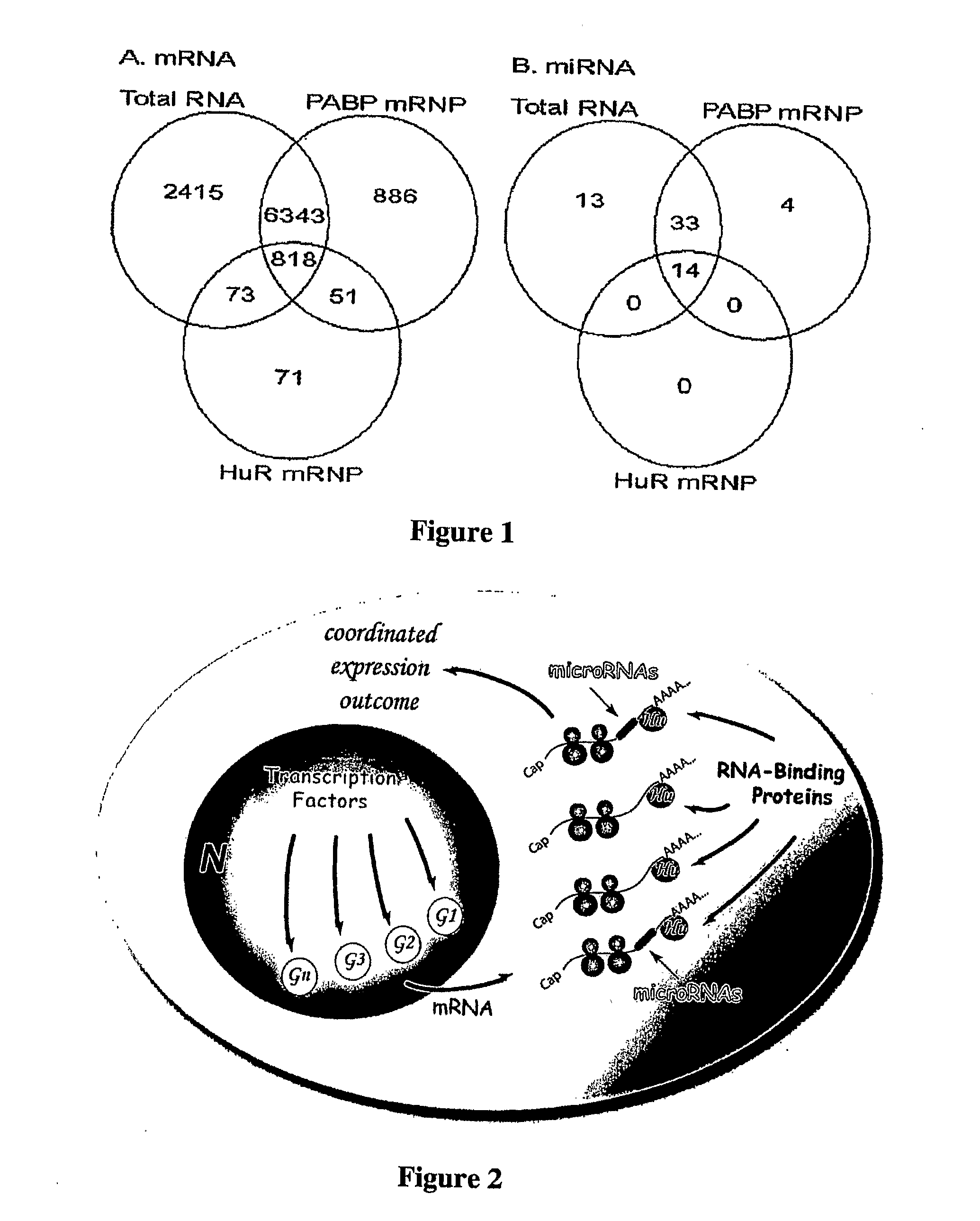Methods for In Vivo Identification of Endogenous mRNA Targets of MicroRNAs
a technology of endogenous mrna and in vivo identification, which is applied in the field of methods of identifying micrornas, can solve the problem of not being certain that each mirna gains functional access
- Summary
- Abstract
- Description
- Claims
- Application Information
AI Technical Summary
Benefits of technology
Problems solved by technology
Method used
Image
Examples
example 1
A Discrete Subset of microRNAs and Predicted mRNA Targets are Enriched Components of HuR mRNPs
[0064]To examine the RNA and protein components of endogenous RNPs, we conducted a genome-wide analysis of miRNA and mRNA populations associated with the regulatory RNA binding protein HuR in the human Jurkat T cell line. The ubiquitously expressed mammalian HuR protein is one of four members of the ELAV / Hu family that all function primarily through association with AU-rich elements (AREs) in the 3′UTRs of target mRNAs, resulting in enhanced message stability and / or translation (12-14). Recently, HuR has also been shown to derepress the microRNA miR-122 translational repression of cationic amino acid transporter 1 (CAT-1) mRNA in a human hepatocellular carcinoma cell line subjected to stress conditions (6).
[0065]Here we report that discrete subsets of miRNAs and mRNAs are associated with HuR in human Jurkat T cells and that the mRNA subpopulation is highly enriched for computationally predi...
PUM
| Property | Measurement | Unit |
|---|---|---|
| Fraction | aaaaa | aaaaa |
| Gene expression profile | aaaaa | aaaaa |
Abstract
Description
Claims
Application Information
 Login to View More
Login to View More - R&D
- Intellectual Property
- Life Sciences
- Materials
- Tech Scout
- Unparalleled Data Quality
- Higher Quality Content
- 60% Fewer Hallucinations
Browse by: Latest US Patents, China's latest patents, Technical Efficacy Thesaurus, Application Domain, Technology Topic, Popular Technical Reports.
© 2025 PatSnap. All rights reserved.Legal|Privacy policy|Modern Slavery Act Transparency Statement|Sitemap|About US| Contact US: help@patsnap.com

